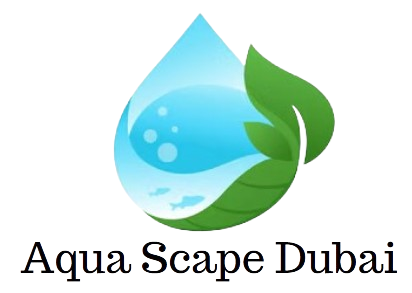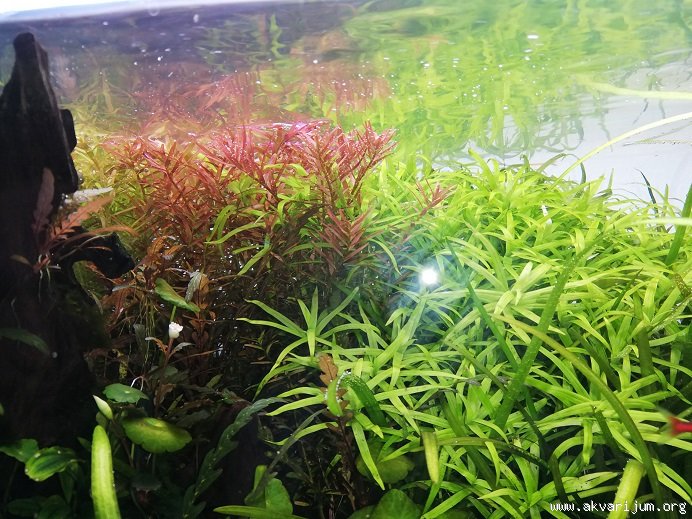Why is Rotala Vietnam H’ra Turning Pink but Not Red?
Rotala Vietnam H’ra is a popular aquatic plant in the aquascaping hobby. It is known for its vibrant red color, which adds a striking contrast to the greenery in a planted tank. However, sometimes you may notice that your Rotala Vietnam H’ra is turning pink instead of the desired red color. In this blog post, we will explore the possible reasons behind this issue and discuss how you can fix it.
One possible reason why your Rotala Vietnam H’ra is turning pink instead of red could be due to insufficient lighting. This plant requires high-intensity lighting in order to achieve its vibrant red coloration. If your tank does not have adequate lighting, the plant may not be able to produce enough pigments to turn red and instead, it may appear pink. To fix this issue, you can consider upgrading your lighting system to provide the necessary intensity for the plant’s growth and color development.
Another factor that can affect the color of Rotala Vietnam H’ra is the nutrient levels in your tank. This plant requires a balanced supply of nutrients, including macronutrients like nitrogen, phosphorus, and potassium, as well as micronutrients like iron. If your tank lacks any of these essential nutrients, it can result in poor color development in the plant. To address this, you can add a comprehensive liquid fertilizer or root tabs to ensure that your Rotala Vietnam H’ra is receiving all the necessary nutrients for its optimal growth and coloration.
Additionally, the water parameters in your tank can also impact the color of Rotala Vietnam H’ra. This plant prefers slightly acidic to neutral water conditions with a pH range of 6.0-7.0. If the pH of your tank water is too high or too low, it can affect the plant’s ability to absorb nutrients and result in color changes. It is important to regularly test and maintain the appropriate water parameters for your Rotala Vietnam H’ra to thrive.Furthermore, the presence of algae in your tank can also affect the color of Rotala Vietnam H’ra. Algae can compete with the plant for nutrients and light, hindering its growth and color development. It is crucial to maintain a proper balance in your tank by controlling algae growth through regular water changes, proper filtration, and the use of algae-eating fish or invertebrates.
1. Insufficient Lighting
One of the most common reasons why Rotala Vietnam H’ra may turn pink instead of red is insufficient lighting. Like many other red plants, Rotala Vietnam H’ra requires high-intensity lighting to maintain its vibrant red color. Without adequate light, the plant may not be able to produce enough pigments responsible for the red coloration.
To fix this issue, you should consider upgrading your lighting setup. Invest in high-quality aquarium lights that provide the necessary intensity and spectrum for red plant growth. LED lights are a popular choice among aquascapers due to their energy efficiency and customizable settings. Ensure that the lights are positioned correctly to provide even coverage and avoid any shadowed areas in the tank.
In addition to upgrading your lighting, it’s also important to consider the duration of light exposure. Rotala Vietnam H’ra requires a minimum of 8 to 10 hours of light per day to thrive. This extended period of light exposure allows the plant to undergo photosynthesis and produce the necessary energy for growth and color development.
Another factor to consider is the light spectrum. Different light spectrums have varying effects on plant growth and coloration. For red plants like Rotala Vietnam H’ra, a light spectrum with a higher proportion of red and blue wavelengths is ideal. These wavelengths are absorbed by the plant’s chlorophyll and other pigments, stimulating photosynthesis and enhancing the red coloration.
When selecting aquarium lights, look for those specifically designed for planted tanks or with adjustable spectrum settings. This will allow you to fine-tune the lighting conditions to meet the specific needs of Rotala Vietnam H’ra. Additionally, consider using a timer to automate the lighting schedule, ensuring consistent and optimal conditions for the plant’s growth.
Lastly, it’s important to regularly monitor and maintain your lighting setup. Over time, the intensity of the lights may decrease, reducing their effectiveness. Clean the light fixtures and replace any old or worn-out bulbs to ensure maximum light output. Additionally, be mindful of any algae growth in the tank, as excessive algae can block the light and hinder the growth of Rotala Vietnam H’ra.
2. Nutrient Deficiencies
Nutrient deficiencies can also contribute to Rotala Vietnam H’ra turning pink instead of red. Like all plants, Rotala Vietnam H’ra requires a balanced supply of essential nutrients to thrive and maintain its vibrant color. In particular, deficiencies in iron and micronutrients can affect the plant’s ability to produce red pigments.
To address this issue, it is important to provide your Rotala Vietnam H’ra with a nutrient-rich environment. Consider using a high-quality aquarium fertilizer that contains a balanced blend of macro and micronutrients. This will ensure that your plant has access to all the necessary elements for healthy growth and vibrant coloration. Liquid fertilizers are a popular choice as they can be easily added to the water column, allowing the plant to absorb the nutrients through its leaves. Substrate fertilizers, on the other hand, are placed in the substrate and slowly release nutrients over time, providing a steady supply to the plant’s roots.
When choosing a fertilizer, look for one specifically formulated for aquarium plants. These fertilizers often contain essential nutrients such as nitrogen, phosphorus, and potassium, as well as trace elements like iron, manganese, and zinc. These elements are crucial for the plant’s metabolic processes, including the production of red pigments. By providing a well-rounded fertilizer, you can ensure that your Rotala Vietnam H’ra has all the necessary building blocks to produce its vibrant red color.
In addition to using a fertilizer, regularly testing the water parameters is crucial in maintaining a nutrient-rich environment for your plants. This will help you monitor the levels of essential nutrients and make any necessary adjustments. Test kits are available that can measure the levels of nutrients such as iron, phosphate, and nitrate. By keeping these levels within the appropriate range, you can prevent nutrient deficiencies and promote optimal plant growth.
It is also worth noting that certain factors can affect the availability of nutrients to the plants. For example, a high pH level can reduce the availability of iron, leading to deficiencies and a loss of red coloration. If you notice your Rotala Vietnam H’ra turning pink, consider testing the pH of your aquarium water and adjusting it if necessary.
3. Carbon Dioxide (CO2) Levels
Carbon dioxide (CO2) is a vital component for photosynthesis in plants. Insufficient levels of CO2 can hinder the plant’s ability to produce energy and essential compounds, including the red pigments in Rotala Vietnam H’ra. This can result in the plant turning pink instead of red.
If you are not already injecting CO2 into your aquarium, consider adding a CO2 system to provide the necessary carbon dioxide for your plants. CO2 injection can significantly enhance the growth and coloration of Rotala Vietnam H’ra and other red plants. However, it is important to monitor and maintain the CO2 levels within the optimal range to avoid any negative effects on fish and other aquatic inhabitants.
Monitoring CO2 levels in your aquarium is crucial to ensure that your plants are receiving the right amount of carbon dioxide. Too little CO2 can result in slow growth and pale colors, while too much CO2 can be harmful to fish and other organisms. The optimal range for CO2 levels is typically between 20 to 30 parts per million (ppm).
There are various methods to measure CO2 levels in your aquarium. One commonly used method is a drop checker, which contains a pH indicator solution that changes color based on the amount of dissolved CO2. By comparing the color of the solution to a color chart, you can determine the approximate CO2 concentration in your tank.
Another method is using a CO2 monitor, which provides real-time readings of CO2 levels. These monitors typically use infrared sensors to detect the concentration of CO2 in the water. They can be more accurate and convenient than drop checkers, but they may also be more expensive.
Once you have determined the CO2 levels in your aquarium, you can adjust them accordingly. If the levels are too low, you may need to increase CO2 injection or consider using liquid carbon supplements. On the other hand, if the levels are too high, you can reduce CO2 injection or increase aeration to help dissipate the excess CO2.
It is important to note that different plants have varying CO2 requirements. While Rotala Vietnam H’ra and other red plants generally benefit from higher CO2 levels, some plants may not tolerate high CO2 concentrations. Therefore, it is essential to research the specific needs of your plants and make adjustments accordingly.
Proper CO2 management is a critical aspect of maintaining a thriving planted aquarium. By ensuring that your plants receive adequate carbon dioxide, you can promote healthy growth and vibrant colors in Rotala Vietnam H’ra and other aquatic flora.

